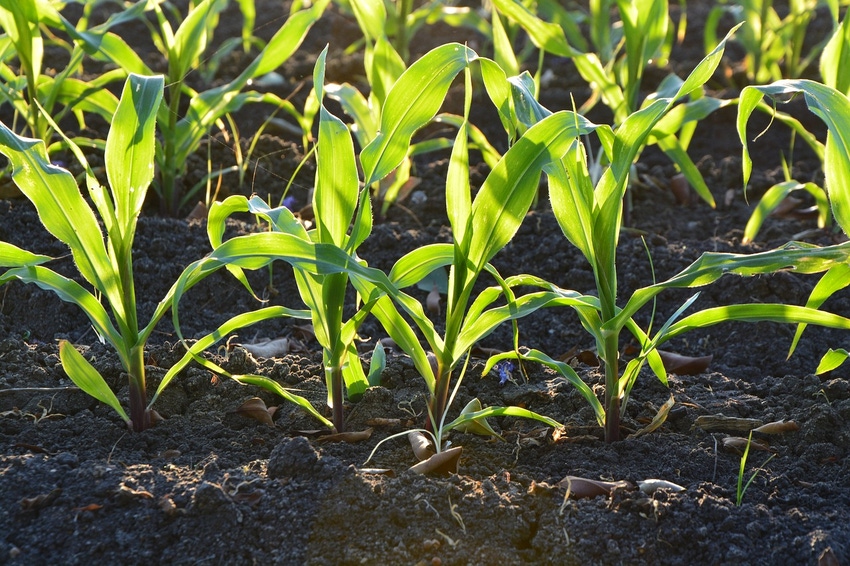Final approval hearing will be held Nov. 15 in U.S. District Court for the District of Kansas.
May 24, 2018

U.S. corn producers may be seeing a light at the end of the tunnel related to the ongoing Syngenta class action suit, and many are trying to figure out how to proceed, said Tiffany Dowell Lashmet, a Texas A&M AgriLife Extension Service agricultural law specialist in Amarillo, Texas.
At the center of a Syngenta litigation settlement is corn raised between Sept. 15, 2013, and April 10, 2018.
Lashmet noted, “I’ve been receiving many phone calls, and the main questions have been, ‘Why am I getting this notice?’ and ‘What does this mean for me?’ The answer is that all corn producers who fall within the class definition are included as part of the class in the proposed settlement and will be affected by this settlement, regardless of their knowledge of or action in the case up to this point.”
The settlement agreement has a broad class definition that includes anyone who owned any interest in corn priced for sale between Sept. 15, 2013, and April 10, 2018.
The lawsuit originated as a result of Syngenta’s 2010 release of seed varieties approved in the U.S. but not in China. In 2013, U.S. corn shipments were rejected upon arrival in China due to the presence of MIR-162, a genetically modified trait found in Syngenta’s Viptera and Duracade corn varieties.
Shortly after the shipments were rejected, U.S. corn prices fell, Lashmet said. Farmers who did not plant the seeds filed suit, claiming that Syngenta’s false assurances about imminent approval by the Chinese government constituted fraud and that China's rejection of the corn shipments caused the drop in the market and, thus, monetary damages.
Tens of thousands of lawsuits were filed across the U.S., and the vast majority were consolidated in “multi-district litigation” in the district of Kansas federal court. In that litigation, the plaintiffs sought to certify 21 classes of farmer plaintiffs, divided by state. During the course of the litigation, the parties reached a tentative settlement.
Lashmet explained that the federal court handling these lawsuits against Syngenta has granted preliminary approval to a proposed settlement agreement that would award $1.51 billion to more than 600,000 class members. Class members are people eligible to receive settlement proceeds and who will be barred from pursuing additional claims or litigation against Syngenta in this matter.
“If any corn producer or a landowner who was part of a crop-share lease involving corn meets that broad definition, he or she is a member of the class and will receive notice,” Lashmet explained.
She said this means corn farmers or landlords meeting the requirements to be considered class members are now receiving notices in their mailbox and instructions on how to proceed.
When producers receive the official court notice in the mail, it will outline the facts of the underlying lawsuit, explain the settlement between the parties and then allow class members to make some decisions.
Lashmet explained that producers essentially have four options:
Option 1 -- Submit a claims form, and remain in the class. The deadline for returning the claims form is Oct. 12. This option allows the producer to receive his or her share of the settlement funds and waive the right to make future claims against Syngenta related to this litigation.
This form also authorizes the claim administrator to gather necessary data to calculate a producer’s share of the settlement funds, specifically the U.S. Department of Agriculture's Farm Service Agency (FSA) form 578 or USDA Risk Management Agency data. If a producer did not report corn acreage to FSA, he or she can include the information on the form to allow calculations to be made. It also seeks information related to leases to determine if the landlord will qualify as a producer based on the structure of the lease agreement.
Option 2 -- Opt out of the class. Members have the right to opt out of the class by submitting written requests for exclusion. By Aug. 10, any member who does not submit a timely exclusion request will be included in the class and deemed to have waived their right to opt out.
Lashmet said people who opt out will not receive any of the settlement funds but will retain the right to file suit against Syngenta individually, subject to any applicable statutes of limitation. Importantly, even if a class member previously opted out of the case when class notice was sent, they will be required to opt out again if they do not desire to be part of this settlement class.
Option 3 -- Object to the settlement. Any party who does not opt out of the class has the right to object to the settlement terms by filing a written objection with the court. Objections must be filed by Aug. 10.
Option 4 -- Do nothing. Producers who do nothing will be included as a class member since they did not effectively opt out, which means they will lose their right to sue Syngenta separately for these claims and will not receive any money from the settlement.
Lashmet warned, however, that this is not the end of the judicial review and said producers will not be seeing checks in their mailbox anytime soon because a fairness hearing and final approval will be required before the settlement can be entered and payments made to the class members.
The final approval hearing will be held Nov. 15 in the U.S. District Court for the District of Kansas. At that time, the court will determine whether the settlement approved is “fair, reasonable and adequate,” enter a final judgment in the case and consider any applications for attorneys’ fees. Any class member filing the required notice of objection will be heard at this time.
“If, at that time, the court grants final settlement approval, the claims payment processing will begin,” Lashmet said.
You May Also Like



